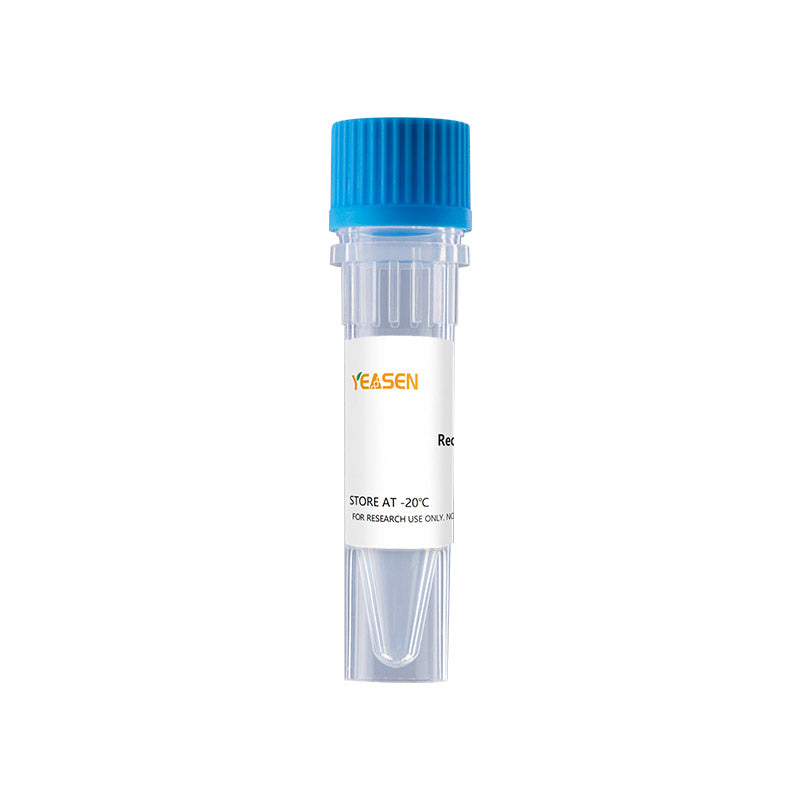Description
Vascular endothelial growth factor D (VEGF-D), also known as c-fos-induced growth factor (FIGF), is a secreted glycoprotein of the VEGF/PDGF family. VEGFs regulate angiogenesis and lymphangiogenesis during development and tumor growth, and are characterized by eight conserved cysteine residues that form a cystine knot structure. VEGF-C and VEGF-D, which share 23% amino acid (aa) sequence identity, are uniquely expressed as preproproteins that contain long N- and Cterminal propeptide extensions around the VEGF homology domain (VHD). Proteolytic processing of the 354 aa VEGF-D preproprotein creates a secreted proprotein. Further processing by extracellular serine proteases, such as plasmin or furin-like proprotein convertases, forms mature VEGF-D consisting of noncovalently linked 42 kDa homodimers of the 117 aa VHD. Mature human VEGF-D shares 94%, 95%, 99%, 97% and 93% aa identity with mouse, rat, equine, canine and bovine VEGF-D, respectively. It is expressed in adult lung, heart, muscle, and small intestine, and is most abundantly expressed in fetal lungs and skin. Mouse and human VEGF-D are ligands for VEGF Receptor 3 (VEGF R3, also called Flt-4) that are active across species and show enhanced affinity when processed. Processed human VEGF-D is also a ligand for VEGF R2, also called Flk-1 or KDR. VEGF R3 is strongly expressed in lymphatic endothelial cells and is essential for regulation of the growth and differentiation of lymphatic endothelium. While VEGF-C is the critical ligand for VEGF R3 during embryonic lymphatic development, VEGF-D is most active in neonatal lymphatic maturation and bone growth. Both promote tumor lymphangiogenesis .
Product Properties
|
Synonyms |
c-fos induced growth factor (vascular endothelial growth factor D); FIGF; vascular endothelial growth factor D; VEGFD; VEGF-D; VEGF-DVEGFDc-Fos-induced growth factor |
|
Accession |
O43915 |
|
Source |
HEK293 Cells-derived human VEGFD, Phe 93-Ser 201 with His tag at the C-terminus |
|
Molecular Weight |
The recombinant mature form of human VEGFD consists of 120 amino acids and has a predicted molecular mass of 13.6 kDa. In SDS-PAGE under reducing conditions, it migrates with an apparent molecular mass of 20-22 kDa due to glycosylation. |
|
Tag |
His |
|
Purity |
> 95% by SDS-PAGE. |
|
Biological Activity |
Measured in a cell proliferation assay using human umbilical vein endothelial cells (HUVEC). The ED50 for this effect is 0.31.6 μg/mL. |
|
Endotoxin |
< 1.0 EU per 1μg of the protein by the LAL method. |
|
Formulation |
Lyophilized from a 0.2 μm filtered concentrated solution in PBS, pH 7.4. |
|
Reconstitution |
We recommend that this vial be briefly centrifuged prior to opening to bring the contents to the bottom. Reconstitute in sterile distilled water or aqueous buffer containing 0.1% BSA to a concentration of 0.1-1.0 mg/mL. Stock solutions should be apportioned into working aliquots and stored at ≤ -20°C. Further dilutions should be made in appropriate buffered solutions. |
Shipping and Storage
The products are shipped with ice pack and can be stored at -20℃ to -80℃ for 1 year.
Recommend to aliquot the protein into smaller quantities when first used and avoid repeated freeze-thaw cycles.
Cautions
1.Avoid repeated freeze-thaw cycles.
2.For your safety and health, please wear lab coats and disposable gloves for operation.
3.For research use only.
Payment & Security
Your payment information is processed securely. We do not store credit card details nor have access to your credit card information.
Inquiry
You may also like
FAQ
The product is for research purposes only and is not intended for therapeutic or diagnostic use in humans or animals. Products and content are protected by patents, trademarks, and copyrights owned by Yeasen Biotechnology. Trademark symbols indicate the country of origin, not necessarily registration in all regions.
Certain applications may require additional third-party intellectual property rights.
Yeasen is dedicated to ethical science, believing our research should address critical questions while ensuring safety and ethical standards.

